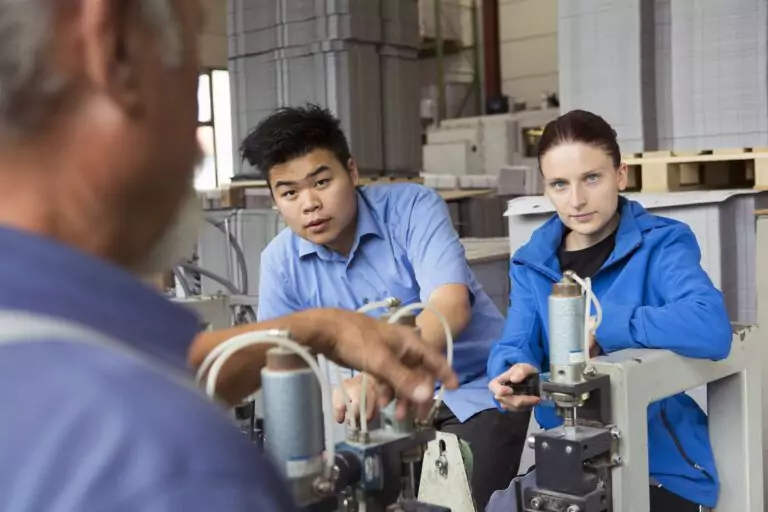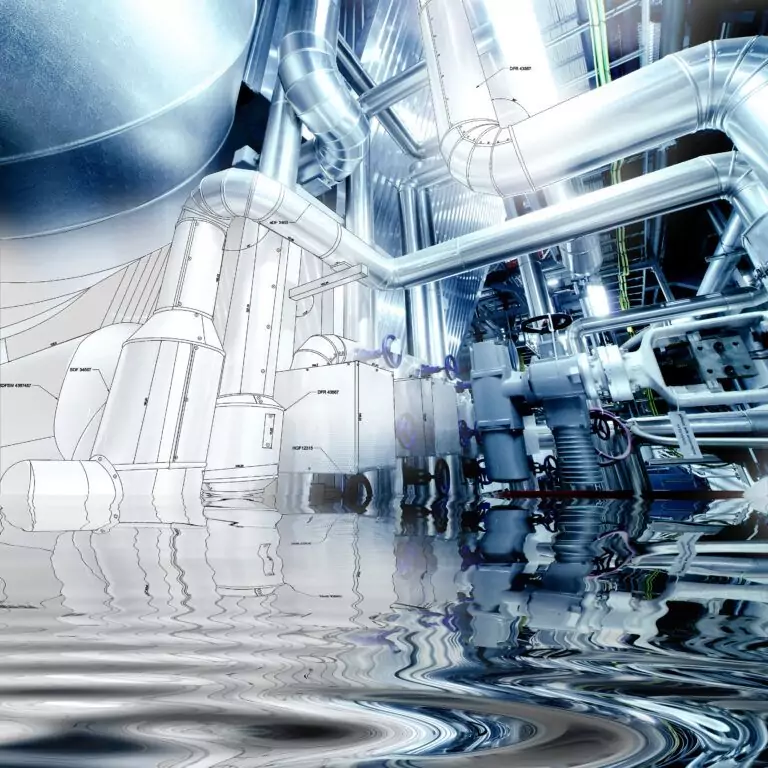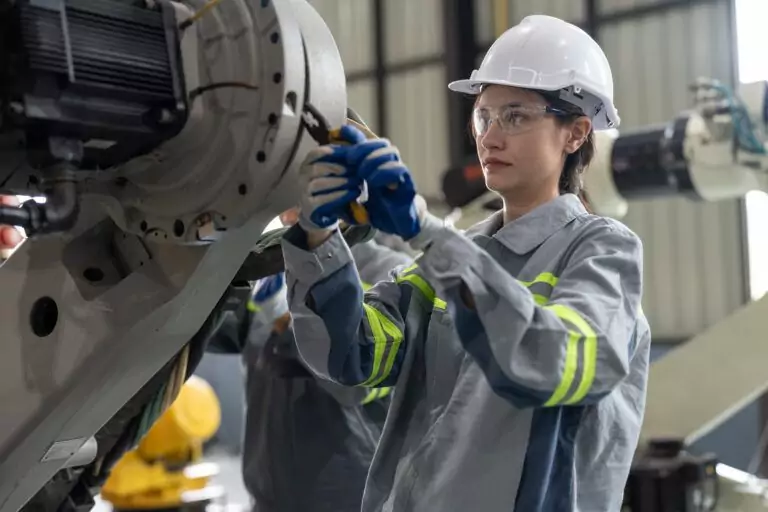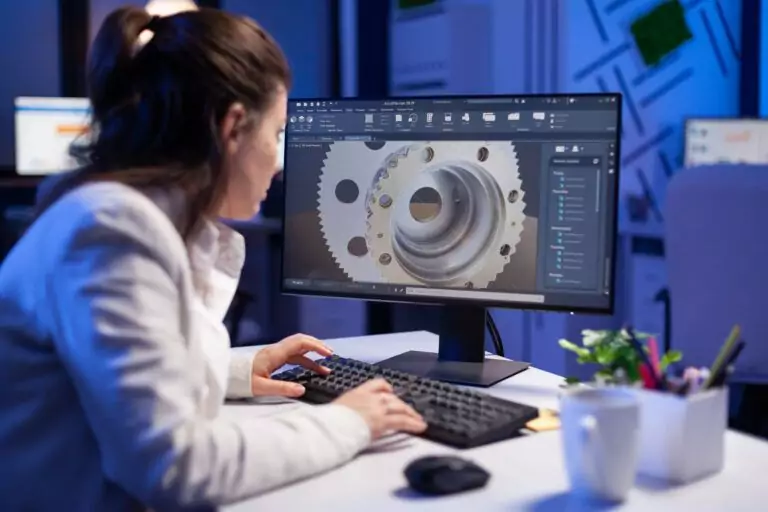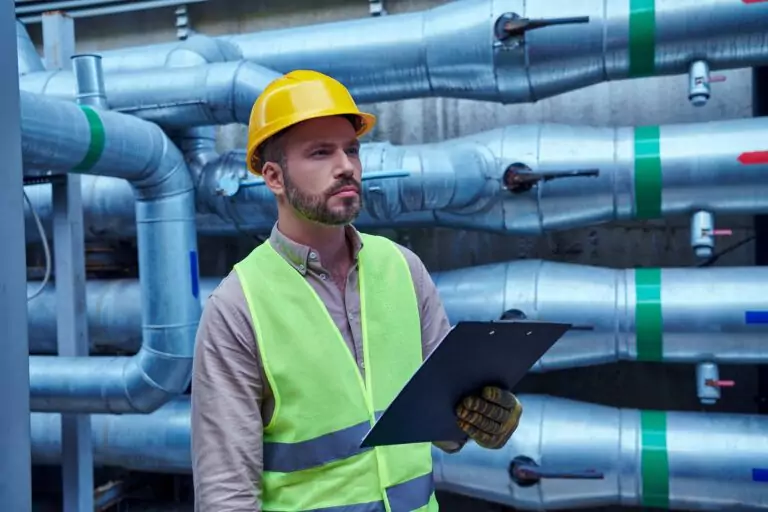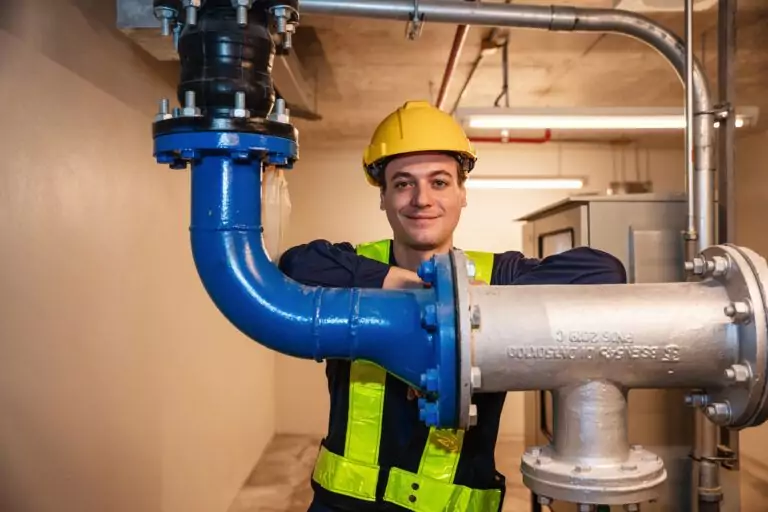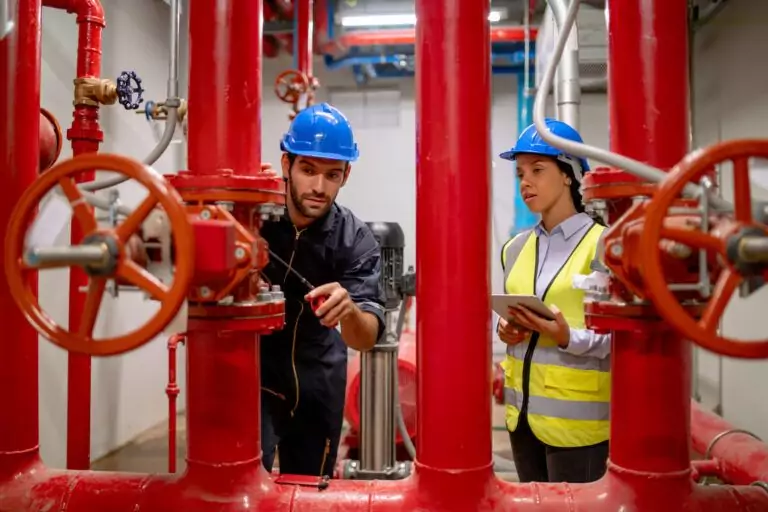Finding a piping designer who can actually deliver? Harder than it should be. Especially for complex industrial projects.
Someone can list every software package and code standard on their resume, but that tells you nothing about whether they can route piping through a congested petrochemical unit while coordinating with process and structural teams.
You need interview questions that separate candidates with hands-on experience from those who’ve memorised textbook answers.
This framework covers eight key competency areas of piping design: technical fundamentals, digital design tools, multi-discipline coordination, and practical problem-solving. Each section includes questions for different experience levels and guidance on what good answers actually sound like.
A quick note on timing: Industry standards and software evolve constantly. These questions reflect current best practices, but adapt them to your specific projects and verify against your organisation’s standards before using them in actual interviews.
Regional Note: This article references commonly used industry standards, including ASME codes, which are widely adopted internationally. However, Canadian projects may be governed by CSA standards, provincial regulations, or specific owner requirements. Always verify applicable standards, codes, and regulations for your specific jurisdiction and project location.
Essential Technical Knowledge Questions Every Piping Designer Must Answer
Start with fundamental technical knowledge. These questions establish whether candidates understand the core engineering principles behind all piping design work.
Technical knowledge alone won’t guarantee valuable project contributions. But without solid fundamentals, no other skills compensate for that gap.
Piping System Fundamentals and Design Codes
Ask candidates to explain when ASME B31.3 piping code applies versus ASME B31.1 requirements, or equivalent standards such as CSA B51 used in Canadian jurisdictions. You want someone who can distinguish process piping from power piping and explain the fundamental scope differences between these standards.
“Walk me through your approach to piping material selection for high-temperature, corrosive service.” The best designers consider maximum operating temperature limits, corrosion allowances, material availability, long-term durability, and total installed cost. They’re balancing metallurgical requirements against operational constraints, not picking materials from a generic spec.
“When does a piping system require formal stress analysis?” Competent designers know the threshold criteria: temperature cycling, heavy equipment components, thermal expansion concerns, and seismic requirements as specified in applicable codes for your jurisdiction.
Piping stress analysis isn’t code compliance theatre. Design mistakes in stress calculations or support arrangements cause expensive problems during startup, including equipment failures, safety incidents, and emergency shutdowns that could’ve been prevented.
Equipment Layout and Space Optimisation
“Describe your approach to arranging major equipment in a new process unit.” Watch for candidates who discuss process flow logic, maintenance access, efficient pipe routing, coordination with civil foundations and structural steel, plus operational safety. The best ones will explain how early layout mistakes create expensive routing problems during detailed design, problems that require costly rework during construction.
Equipment layout decisions affect everything downstream. Get this wrong early, and you’re fighting it through the entire project.
“What clearances do you maintain around vessels and exchangers, and why?” You should hear specific ranges based on industry standards and client specifications, often around three to five feet around vessel nozzles, depending on size, operating pressure, and project requirements, though specific clearances vary significantly by client standards and jurisdictional requirements. Generic answers about “adequate clearance” tell you nothing.
Isometric Drawing and Documentation Standards
“What information must be included on a piping isometric drawing?” Complete answers cover line numbers, material specifications, weld counts, dimensions, pipe support locations, valve and fitting IDs, special requirements like heat tracing or insulation, and all fabrication details and construction needs.
“How do you ensure your bill of materials matches the isometric?” Listen for systematic approaches: cross-checking material takeoffs, verifying speciality item counts, accounting for field versus shop welds, and validating quantities against the 3D model.
There’ve been fabrication shops that experience significant losses because a piping designer didn’t double-check their material takeoffs. One missing valve count or incorrect pipe length multiplied across an entire unit adds up fast.
Evaluating Software Proficiency and Digital Workflow Skills
Software competency is non-negotiable now. Modern industrial projects generate massive amounts of data. Designers must work efficiently within integrated digital environments.
3D Modelling Software Competency Assessment
“Which 3D plant design software have you used most extensively, and what are its strengths and limitations?” Experienced designers have detailed opinions based on hands-on work. They’ll discuss user interface efficiency, automated clash detection, data extraction features, or file handling characteristics that affect productivity.
You can tell within five minutes whether someone has genuine software proficiency or just listed resume keywords.
“Walk me through modelling a complex pipe rack with 40-50 lines at multiple elevations.” The answer should describe systematic methodology: establishing reference geometry, organising piping by system or elevation, using software features to maximise efficiency, and implementing naming conventions that support coordination.
“How do you handle clash detection in a congested area?” You want descriptions of systematic clash review processes, filtering false positives, prioritising serious interferences, and coordinating with other disciplines to resolve conflicts. If they’ve actually done this, they’ll have war stories about particularly nasty clashes and creative solutions.
Digital Asset Management and Data-Driven Design
“Have you worked with integrated data environments or enterprise asset management systems?” Good answers mention asset data handover requirements for owner operations, working with structured databases, and understanding how design data flows to plant operations and maintenance systems.
“What’s your understanding of digital twinA digital twin is a precise, virtual representation of a physical object system, process, or asset. Digital twins integrate machine learnin... concepts and how they relate to piping design?” You’re testing awareness of industry trends, not expecting specialised expertise. Thoughtful candidates acknowledge that piping models can become the basis for operational digital twins that support plant performance optimisation and predictive maintenance.
Software-Specific Scenario Questions
“You’ve been given a large existing model from another contractor with numerous errors and inconsistencies. How do you clean it up?” This happens constantly on brownfield projects. Watch for systematic thinking: developing an error inventory, prioritising serious coordination issues, establishing consistent naming standards, and creating a remediation plan with clear milestones.
“How do you validate your 3D model against design drawings and specifications?” Experienced designers describe quality checking workflows, cross-referencing model extracts with design basis documents, using software reporting tools, and coordinating with other discipline models.
Multi-Discipline Collaboration and Integration Questions
Piping design never happens in isolation on integrated projects. Every system you route affects structural loads, ties into process requirements, and must accommodate electrical and instrumentation components, including cable trays, instrument connections, and control valve access.
Working Across Engineering Disciplines
“How do you coordinate with process engineers during line sizing and specification development?” You want candidates who review process flow diagrams together with process engineers, understand design basis documents, clarify service conditions affecting material selection, and confirm pressure drop allowances.
“Describe your interaction with civil and structural teams regarding pipe support design.” The best designers understand they provide loading information to structural engineers, coordinate support locations and connection details, and suggest routing adjustments that minimise structural steel requirements and reduce installed costs.
“What information do you need from electrical and instrumentation engineers, and what do you provide them?” Competent answers cover heat tracing requirements, instrument locations and orientations, cable tray coordination, and ensuring adequate access for maintenance.
Owner-Operator vs EPC Project Approach
“Have you worked directly for owner-operators, for EPCs, or both? How does your approach differ?” The best candidates recognise that owner-direct projects often involve more operational input and long-term asset management considerations. In contrast, EPC projects may emphasise construction efficiency and schedule performance to meet contractual obligations.
Communication and Documentation Skills
“Explain a piping routing decision to a non-technical project stakeholder.” Watch for people who focus on practical implications: construction access requirements, operational considerations for maintenance personnel, cost impacts, and safety factors during operations. Skip the technical jargon and explain why it matters.
“Walk me through documenting and communicating a significant design change.” You want systematic approaches: capturing the change driver, assessing impacts on other disciplines and systems, documenting revised design intent, and ensuring construction packages reflect changes consistently.
Advanced Problem-Solving and Real-World Scenario Questions
Technical knowledge means nothing if candidates can’t apply it to messy real-world situations. These scenarios reveal how someone actually thinks through complex problems.
Watch for systematic approaches rather than expecting perfect answers to every scenario. The best problem-solvers break down complexity into manageable components, identify design constraints, consider trade-offs between competing requirements, and explain their reasoning using sound engineering judgment.
Complex Routing and Constraint Management
“You need to route a 24-inch high-temperature line through an area with existing equipment, overhead cable trays, and limited clearance to the pipe rack. Walk me through your approach.” Experienced designers demonstrate systematic thinking about congested area routing: surveying existing conditions through field verification or existing models, identifying clearance requirements from applicable codes, considering routing alternatives that balance multiple constraints, and evaluating impacts on pipe support requirements and material costs.
“How do you handle situations where ideal piping design conflicts with structural, electrical, or architectural requirements?” You want collaborative problem-solving, understanding competing constraints, finding compromise solutions, and recognising when one discipline should defer to another. The piping designer who insists their routing is the only option creates problems for everyone.
Troubleshooting and Design Issue Resolution
“Describe a time when you discovered a significant design error late in a project. How did you handle it?” Everyone makes mistakes. The best candidates own them without deflecting blame. They’ll explain what they found, how they assessed the error’s scope and impact on other disciplines, identified root causes through careful analysis, implemented fixes with proper change control, and prevented similar issues through improved quality checking.
Any piping designer who claims they’ve never made design errors or experienced project challenges lacks either sufficient experience or honest self-assessment.
“How would you investigate reported constructability issues with your design?” Thoughtful answers include talking with construction personnel to understand the specific problem, reviewing design assumptions, considering field conditions versus design documentation, and proposing practical solutions. The worst response? Getting defensive about the design without listening to field feedback.
Value Engineering and Cost Optimisation
“Give me an example of how you’ve reduced total installation costThe total installed cost refers to the final cost of designing, fabricating and building a capital project or industrial asset. Various phas... through smart piping design.” Watch for specific approaches: minimising speciality materials through careful routing, reducing field welds by optimising spool piece sizes, simplifying support requirements, and shortening construction schedules.
Too many piping designers focus on meeting minimum code requirements without adequately considering the total installed cost. They default to conservative specifications that create overkill and unnecessary project expenses.
“How do material selection decisions balance initial cost against long-term performance?” The best answers acknowledge this trade-off directly. Use premium materials where service conditions justify it. Recommend cost-effective alternatives when overspecification isn’t warranted.
Sustainability and Green Energy Project Questions
Energy transition toward renewable power and low-carbon processes is reshaping industrial projects across multiple sectors. Candidates need awareness of emerging technologies in carbon capture, hydrogen production, and sustainable fuels, plus a willingness to adapt established piping design practices to new applications with different operating conditions.
Carbon Capture and Storage System Design
“Have you worked on carbon capture or CO2 transport systems? What unique design considerations apply?” If candidates have relevant experience, listen for specific technical points: material compatibility with CO2 streams at various concentrations, pressure and temperature considerations for dense phase carbon dioxide transport, safety requirements for high-pressure CO2 systems, and special inspection or testing requirements mandated by applicable standards.
Renewable Energy Integration and Biofuels Projects
“What piping design considerations apply to biofuels processing facilities compared to traditional petroleum refining?” Experienced candidates recognise similarities and differences. Some processes remain analogous to conventional refining unit operations. Still, biofuel facilities involve different feedstock properties, different operating conditions, potentially different material compatibility requirements, and varying safety classifications depending on the specific biofuel production pathway.
Energy-Efficient Design and Environmental Responsibility
“How do piping design decisions affect energy consumption in operating facilities?” Thoughtful answers mention minimising pressure drop through optimised piping system design, insulation performance that reduces heat loss, heat recovery opportunities using heat exchangers, and reducing pumping energy by selecting appropriate pipe sizes and minimising friction losses.
“What role does piping design play in minimising environmental impact?” The best candidates recognise multiple considerations: fugitive emissions prevention through proper valve and fitting selection, secondary containment for hazardous materials, proper drainage and collection systems, and material choices with lower environmental footprints.
Quality Assurance, Standards Compliance, and Professional Excellence
Quality engineering isn’t optional in industrial projects. These questions assess commitment to accuracy, thoroughness, and continuous improvement.
Quality Control Processes and Design Verification
“Walk me through your personal quality checking process before submitting deliverables.” You want systematic approaches to personal quality assurance: self-checking calculations and specifications before submitting deliverables, reviewing drawings for consistency and completeness against design basis requirements, verifying coordination with other disciplines through model clash detection and interface reviews, and using standardised checklists for repetitive design verification tasks.
“Describe a situation where your quality checking caught a significant error before it caused problems.” Real examples demonstrate commitment to quality. Candidates should explain what they found, how their checking process revealed it, and what would have happened if the error hadn’t been caught.
Industry Standards and Code Compliance
“How do you stay current with changes to piping codes and industry standards?” The best answers mention reviewing code updates when new editions are published, participating in professional development programs and industry conferences, learning from colleagues with specialised expertise, and studying lessons learned from projects.
Note that applicable codes vary by jurisdiction. Canadian projects may reference CSA standards, provincial regulations, and client-specific requirements alongside or instead of ASME codes. Verify which standards govern your specific projects and ensure candidates understand the standards relevant to your work.
“What’s your approach when you encounter a design situation not clearly addressed by applicable codes?” You want conservative engineering judgment when addressing situations not explicitly covered by codes. The best designers research similar situations in technical literature, consult with more experienced engineers or code committee members, consider the intent of code requirements rather than literal text, and document the technical rationale for their approach.
Lessons Learned and Continuous Improvement
“Tell me about a significant mistake you made on a project and what you learned from it.” Everyone makes mistakes. The best candidates own them without deflecting blame, explain what they learned, and describe how they changed their practices to prevent recurrence.
“How do you incorporate feedback from construction and commissioning into your future designs?” Experienced piping designers value field feedback from construction contractors and plant operators. They stay connected with construction progress through site visits and progress meetings, learn from installation challenges that reveal constructability issues, understand operational considerations affecting long-term plant performance, and apply these lessons to improve future work.
How to Evaluate Piping Designer Responses and Make Confident Hiring Decisions
Having strong interview questions matters, but you also need a systematic approach to evaluate responses and make defensible hiring decisions based on objective criteria rather than gut feelings.
Scoring Framework and Assessment Criteria
Create simple scoring rubrics for each major competency area: technical knowledge, software proficiency, collaboration skills, problem-solving ability, communication effectiveness, and quality orientation. Define rating criteria for each dimension.
Watch for red flags that indicate problematic candidates: claiming expertise in everything without acknowledging knowledge gaps, blaming others for past project problems without accepting any personal responsibility, resistance to feedback or new approaches, inability to explain technical decisions clearly, and generic answers that could apply to any project without specific technical details.
The best candidates demonstrate both confidence and humility. They speak with authority about their experience while acknowledging what they don’t know and showing interest in learning.
Experience Level Differentiation
Junior piping designers shouldn’t be expected to answer every advanced technical question. Focus on assessing technical fundamentals, learning approach, and growth potential rather than expecting extensive project experience.
Senior designers must show depth and breadth. They should handle complex technical challenges, mentor less experienced staff, make sound engineering judgments in ambiguous situations, and drive design excellence.
Don’t assume years of experience equal seniority. There’ve been candidates with 15 years remaining at intermediate technical levels, while others with 8 years have developed senior-level capabilities. Assess actual competence demonstrated through answers, not resume tenure.
Follow-Up Question Strategies
When candidates provide surface-level answers, dig deeper with follow-up questions: “Can you elaborate on the specific technical factors you considered in that design decision?” or “What would you do if that approach didn’t work and you needed an alternative solution?”
Balance a thorough technical assessment with positive candidate experience. You’re evaluating piping design competence, not trying to stump candidates or make them uncomfortable through adversarial questioning.
Building Your Piping Design Team With Confidence
Successful piping design teams combine technical competence across multiple industrial applications, collaborative mindsets that enable effective multi-discipline coordination, and commitment to quality engineering that protects project outcomes and reduces construction rework.
Beyond technical proficiency, identifying the essential skills that enable piping designers to thrive in complex multi-disciplinary environments, including systematic problem-solving, proactive coordination, and adaptability to emerging technologies, separates good hires from great ones.
Scenario-based questions reveal practical problem-solving ability better than theoretical knowledge checks or memorisation of code requirements without understanding the application context. Technical fundamentals matter enormously, but applying them to messy real-world projects matters more.
Assess collaborative skills explicitly. Piping design happens within integrated teams. Designers who resist coordination create expensive problems throughout project execution.
Adapt these questions to your specific needs. This framework covers key competency areas, but your projects may need emphasis on particular technical domains or software platforms. Use this as a starting point and customise based on your actual requirements.
Implement systematic evaluation processes rather than relying on impressions. Structured assessment with documented scoring produces better hiring decisions and creates defensible selection processes.
Vista Projects has built engineering teams delivering quality industrial projects for 40 years. This approach reflects lessons learned through thousands of interviews and decades of project execution across petrochemical, mineral processing, and emerging energy markets.
This interview framework is for informational purposes and should not be considered employment or legal advice. Interview practices, employment laws, industry standards, and engineering codes vary by jurisdiction and change frequently. Canadian projects may be governed by provincial regulations, CSA standards, and regional requirements that differ from those in this article. Always consult current HR best practices, legal counsel, and applicable engineering standards for guidance specific to your jurisdiction and hiring processes. Verify all technical standards and regulatory requirements with current authoritative sources before application.

